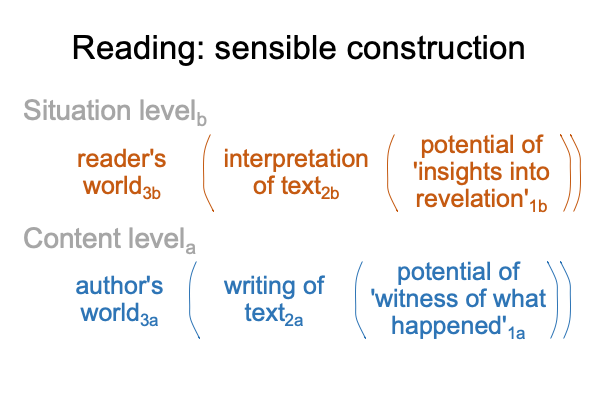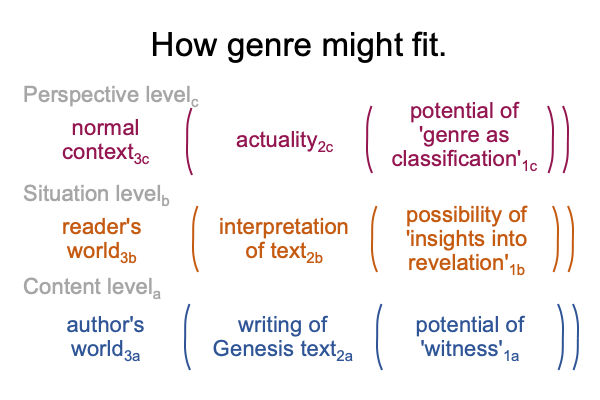Looking at the Book (2015) Genesis: History, Fiction or Neither? (Part 19 of 38)
0064 In chapter two, Gordon H. Wenham views Gen 1-11 as protohistory.
He starts with the genealogies.
Even though the narratives are difficult to classify as genre, the genealogies are not.
0065 Wenham proposes a thought experiment.
Clearly, the view from within, the author’s point of view, would not assign the classifier, “genre”, to portions of the text. The classification comes from the outside, from the reader’s point of view.
So, how does the reader, on the outside, enter the thought-world of the author, on the inside?
0066 This thought experiment associates to a two-level interscope, which is discussed in A Primer on Sensible and Social Construction.
For content, in the normal-context of the author’s world3a, the Biblical text2a emerges from (and situates) the potential of ‘the insider’s witness’1a.
For situation, in the normal-context of the reader’s world3b, an interpretation of the Biblical text2b emerges from (and situates) the potential of ‘insights into the revelation of what happened’1b.
0067 Here is a picture.


